Elizabeth Murray and Anne Waldman: Her Story
In Her Story (1988-1990), Murray collaborated with acclaimed American performance-poet Anne Waldman (born 1945) to create a highly personal and consciously feminine reaction to modern life. Murray's engaging color prints, which may at first glance seem like abstract compositions, are actually amalgams of recognizable subject matter--cups and saucers, chairs, paint brushes, and human figures--that she uses as starting points for her visual and emotional explorations of her environment.
(https://collections.artsmia.org/art/61859/her-story-elizabeth-murray)
(https://collections.artsmia.org/art/61859/her-story-elizabeth-murray)
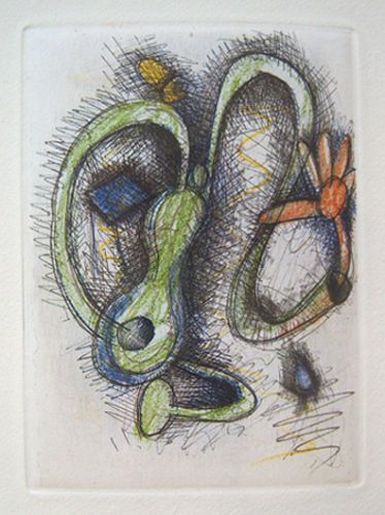
1.
Objects placed
toward the noisiest door
ritual of day
open blind, wake the one
she comes now
although hesitating
2 minutes longer
Then he's gone
She thought he
might be a catch
before he was
to be useful
distraction:
trowel, eyeglasses
a sudden play of legs
He's here to make a baby
Objects placed
toward the noisiest door
ritual of day
open blind, wake the one
she comes now
although hesitating
2 minutes longer
Then he's gone
She thought he
might be a catch
before he was
to be useful
distraction:
trowel, eyeglasses
a sudden play of legs
He's here to make a baby
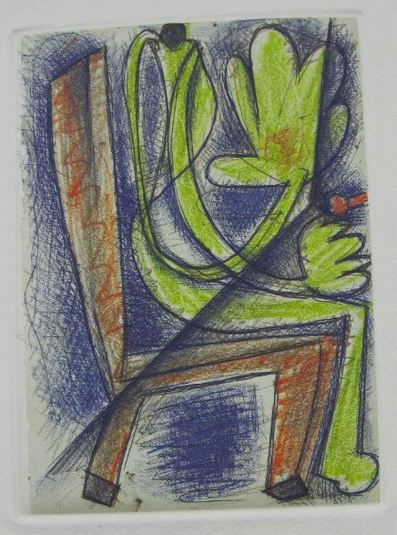
2.
Manhattan red-heart
street of romance
alley-hearts
playground by the river
rush to vehicle
moon's fury, etc.
Manhattan fabric
The fabrications
went like this
I lied I lied
I lied
I tell you
Love perverted
my tongue
Manhattan red-heart
street of romance
alley-hearts
playground by the river
rush to vehicle
moon's fury, etc.
Manhattan fabric
The fabrications
went like this
I lied I lied
I lied
I tell you
Love perverted
my tongue
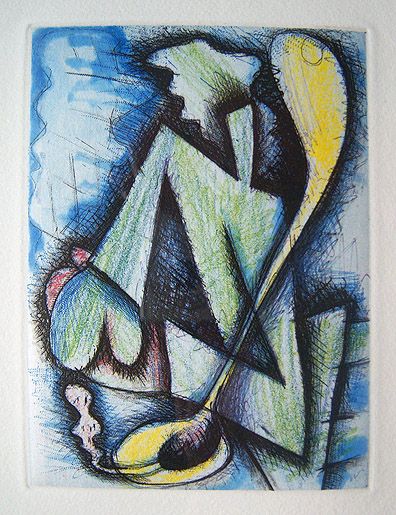
3.
Cluster in tongue
drives me mad
after all
I say "upstreperous"
I say "Avenue du Clichy"
I want to say Concorde
Stop Here Now
Cluster in tongue
drives me mad
after all
I say "upstreperous"
I say "Avenue du Clichy"
I want to say Concorde
Stop Here Now
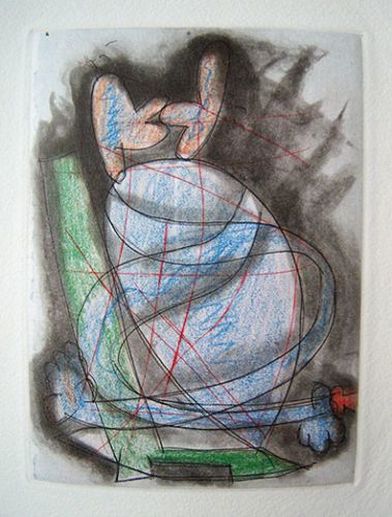
4.
Suspicion leaves
the town
nonverbally
All around
chatter
It's a town of tears
Ask me about it later
& face the rising sun
Suspicion leaves
the town
nonverbally
All around
chatter
It's a town of tears
Ask me about it later
& face the rising sun
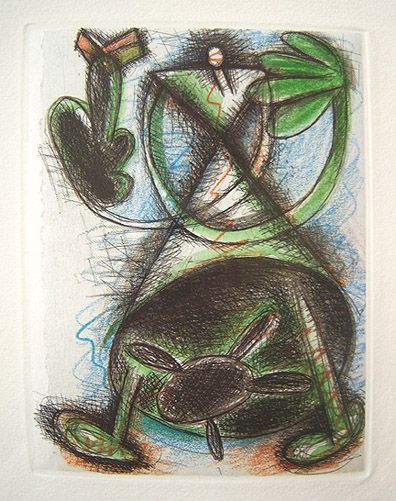
5.
Looks like day
or breaking point
It looks like
somebody ready
to go out
to scream
to defy something
somewhere
throw up a
cloud of
dust
Smokescreen
The red of my lust
The green of your sweater
The cool blue of
night coming on
Any path will do
Looks like day
or breaking point
It looks like
somebody ready
to go out
to scream
to defy something
somewhere
throw up a
cloud of
dust
Smokescreen
The red of my lust
The green of your sweater
The cool blue of
night coming on
Any path will do

6.
Unsteady at the window
Reflection a legend
she observed
Her hair a nest of
currents
Safety of a door, a
long corridor, walk,
What's next?
Unsteady at the window
Reflection a legend
she observed
Her hair a nest of
currents
Safety of a door, a
long corridor, walk,
What's next?
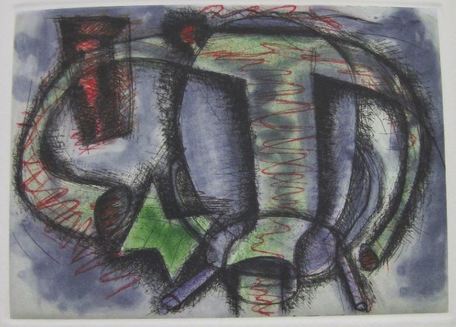
7.
A wrench is a power
instrument
getting itself
together
getting ahold
the way we are
The way a vise
keeps up in shape
I want to be a
viceless small thing
wrapped in a blanket
put me down
A wrench is a power
instrument
getting itself
together
getting ahold
the way we are
The way a vise
keeps up in shape
I want to be a
viceless small thing
wrapped in a blanket
put me down
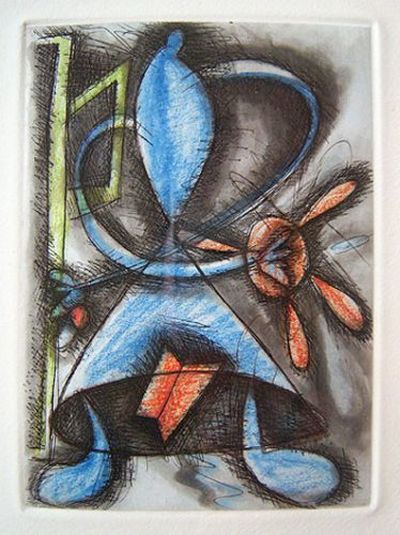
8.
The man makes me nervous
He sees inside me
like an x-ray
Balloons come out
of my head
like bubbles
as if drowned
This one says "Gulp"
This one says "Whew"
I'm in his cartoon
each morning
Night: lock the door
The man makes me nervous
He sees inside me
like an x-ray
Balloons come out
of my head
like bubbles
as if drowned
This one says "Gulp"
This one says "Whew"
I'm in his cartoon
each morning
Night: lock the door

9.
Historic America
See for yourself
Never listening
Historic America
See for yourself
Never listening
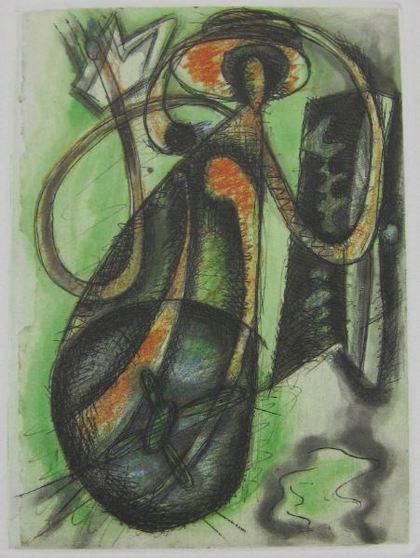
10.
Inside a head
a person acclimatized
to world
Make more rubber bands
or make a
dark space for returning
things
Make thoughts
the shape of spoons
or breasts or leaves
A postage stamp is
nice in its place
Inside a head
a person acclimatized
to world
Make more rubber bands
or make a
dark space for returning
things
Make thoughts
the shape of spoons
or breasts or leaves
A postage stamp is
nice in its place
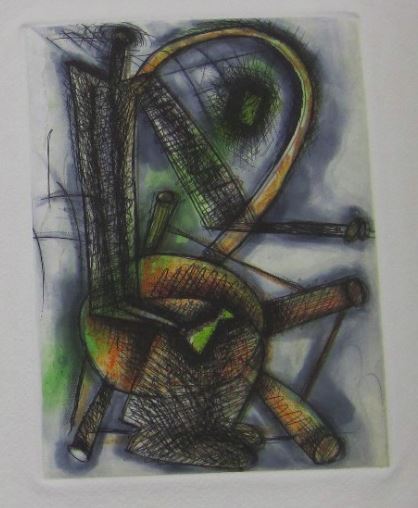
11.
Glacial men
enter & state their
love with hearts of stone
Yet their love is a rage
of color
Their love is a harness
that chafes on me
Love to do me in
transfixed for life
Glacial men
enter & state their
love with hearts of stone
Yet their love is a rage
of color
Their love is a harness
that chafes on me
Love to do me in
transfixed for life
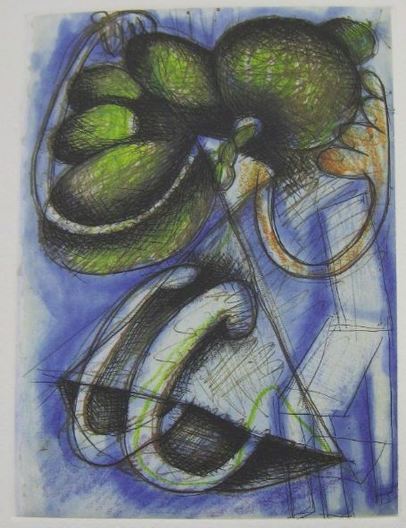
12.
The lines
can be adjusted
as if to say
non-discernible
The picture
is
distinguishable
from me
the model
Lines are
drawn by feeling
The feeling
will no longer
help you draw
on your past
Forget it
My arms are
hollow tubes
You aren't there
anymore
The lines
can be adjusted
as if to say
non-discernible
The picture
is
distinguishable
from me
the model
Lines are
drawn by feeling
The feeling
will no longer
help you draw
on your past
Forget it
My arms are
hollow tubes
You aren't there
anymore
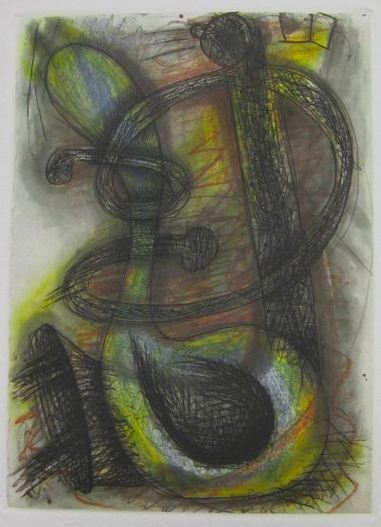
13.
I saw the
rhythms inside
They were stark
& joyous
& I painted them
All to see
I saw the
rhythms inside
They were stark
& joyous
& I painted them
All to see
Discussion Points
→ Like her oil paintings, Murray's prints are vividly colored, exuberantly decorative, and strongly sculptural in feeling. And while her images reveal an obvious penchant for elaborate geometric arrangements of form and color, it is Murray's emotional reaction to the world and its physicality that lies at the heart of her work and lends it such a potent vitality.
(https://collections.artsmia.org/art/61859/her-story-elizabeth-murray)
→ In Her Story, Murray’s drawings are cellular, mutating, nuclear, nucleus, openings around liquid matter where small intersections of shapes are floating... bodies in the process of being formed, something between animation and machine, between organic and synthetic, between anemone, monster, and human.
→ The act of imagining a space entails that the writer actually go in and interpret what the artist is trying to do — revealing the parts while simultaneously seeing the whole. In Her Story, Waldman looks very closely at what Murray is doing and then finds a form for it in language. She describes her reading of Murray’s work: “The drawings are coils, bursts of energy, fantastically witty, like cartoons gone awry yet made elegant in their transformation. She seems located in ‘things,’ but what are they?” (Vow, 324) Here Waldman is looking at the artwork in a particular way in order to find a point of intersection where she can find her own form in language.
To do this, Waldman inserts a “she” who is finding her form in the floating shapes. This “she” must first disconnect herself from a “he” who is also claiming the territory. Waldman describes the narrative of Her Story as “a narrative logic. It embeds being female, being pregnant, being in a kind of humorous, hormonal situation vis-à-vis the world, the ‘male.’ It’s a contest, a struggle. Her drawings suggested a story, not necessarily hers or mine but the story of a state of mind taking shape” (Vow, 325-6). In order to find this evolving mind, Waldman had to actually enter the space of the artwork and find its logic. This is exactly what the “she” is doing in the poem — wandering through a territory where maps have gone awry, navigating a maze of corners and loops, making (marking) her way through.
→ The seventh of Murray’s drawings in the sequence has two discernible shapes that have broken away from each other — one is floating in the sky, the other is cascading across the ground — each is in its own form that makes sense where it is in space. Waldman, in her corresponding poem, has wrestled the tubular amoebas and has found her way through the tangle of primal mess — those strings and quarks that keep it all together. Seeing herself in the context of a larger world, Waldman looks into Murray’s drawings and sees an individual body being held together by a larger, unstructured universe.
(http://www.poetspath.com/Scholarship_Project/prevallet.html)
(Waldman, Anne. Vow to Poetry: Essays, Interviews and Manifestos. Minneapolis, MN: Coffee House Press, 2001)
(Her Story. Islet, NY: Universal Limited Art Editions, 1999.)
→ Like her oil paintings, Murray's prints are vividly colored, exuberantly decorative, and strongly sculptural in feeling. And while her images reveal an obvious penchant for elaborate geometric arrangements of form and color, it is Murray's emotional reaction to the world and its physicality that lies at the heart of her work and lends it such a potent vitality.
(https://collections.artsmia.org/art/61859/her-story-elizabeth-murray)
→ In Her Story, Murray’s drawings are cellular, mutating, nuclear, nucleus, openings around liquid matter where small intersections of shapes are floating... bodies in the process of being formed, something between animation and machine, between organic and synthetic, between anemone, monster, and human.
→ The act of imagining a space entails that the writer actually go in and interpret what the artist is trying to do — revealing the parts while simultaneously seeing the whole. In Her Story, Waldman looks very closely at what Murray is doing and then finds a form for it in language. She describes her reading of Murray’s work: “The drawings are coils, bursts of energy, fantastically witty, like cartoons gone awry yet made elegant in their transformation. She seems located in ‘things,’ but what are they?” (Vow, 324) Here Waldman is looking at the artwork in a particular way in order to find a point of intersection where she can find her own form in language.
To do this, Waldman inserts a “she” who is finding her form in the floating shapes. This “she” must first disconnect herself from a “he” who is also claiming the territory. Waldman describes the narrative of Her Story as “a narrative logic. It embeds being female, being pregnant, being in a kind of humorous, hormonal situation vis-à-vis the world, the ‘male.’ It’s a contest, a struggle. Her drawings suggested a story, not necessarily hers or mine but the story of a state of mind taking shape” (Vow, 325-6). In order to find this evolving mind, Waldman had to actually enter the space of the artwork and find its logic. This is exactly what the “she” is doing in the poem — wandering through a territory where maps have gone awry, navigating a maze of corners and loops, making (marking) her way through.
→ The seventh of Murray’s drawings in the sequence has two discernible shapes that have broken away from each other — one is floating in the sky, the other is cascading across the ground — each is in its own form that makes sense where it is in space. Waldman, in her corresponding poem, has wrestled the tubular amoebas and has found her way through the tangle of primal mess — those strings and quarks that keep it all together. Seeing herself in the context of a larger world, Waldman looks into Murray’s drawings and sees an individual body being held together by a larger, unstructured universe.
(http://www.poetspath.com/Scholarship_Project/prevallet.html)
(Waldman, Anne. Vow to Poetry: Essays, Interviews and Manifestos. Minneapolis, MN: Coffee House Press, 2001)
(Her Story. Islet, NY: Universal Limited Art Editions, 1999.)
